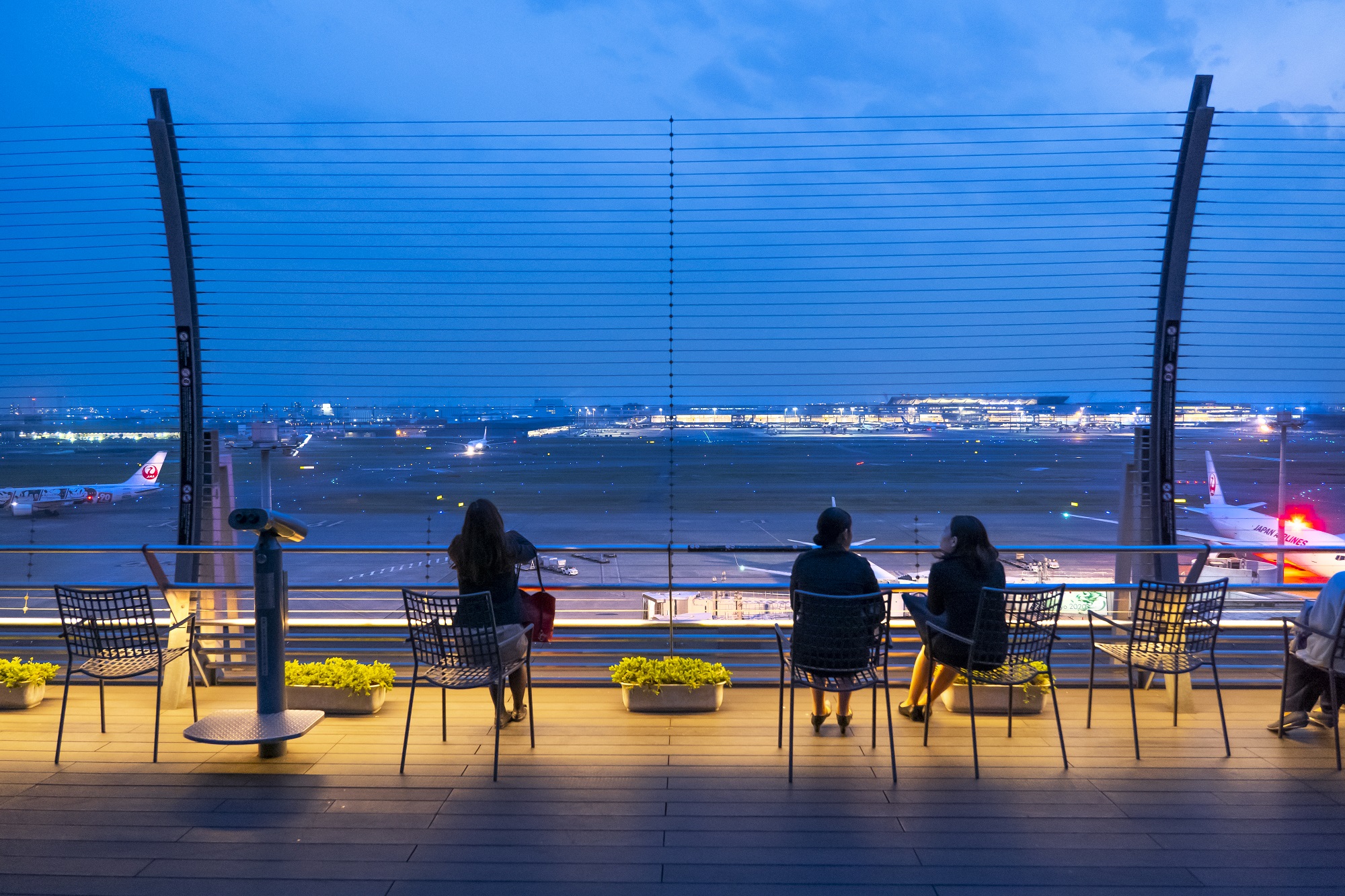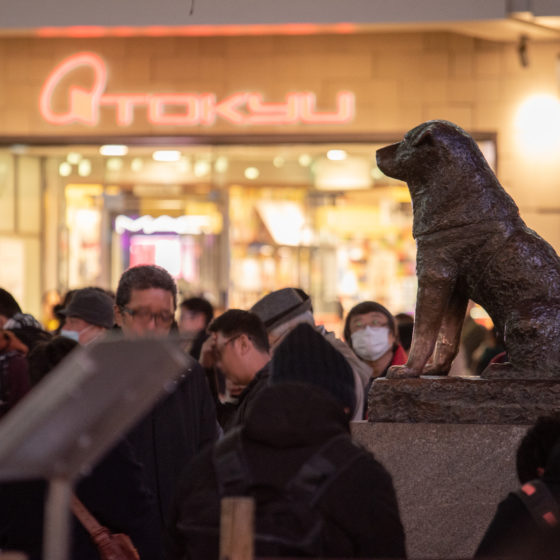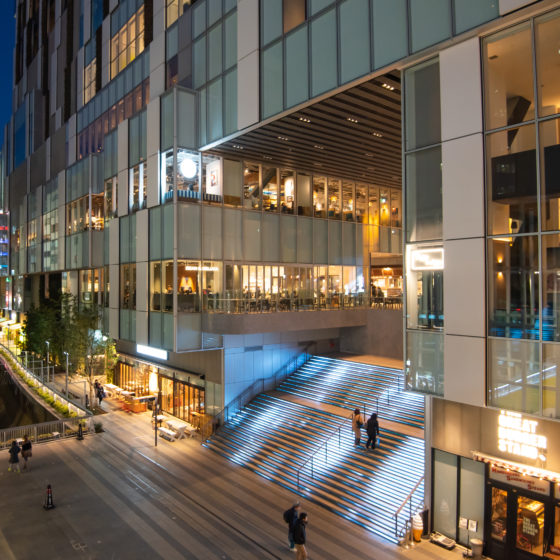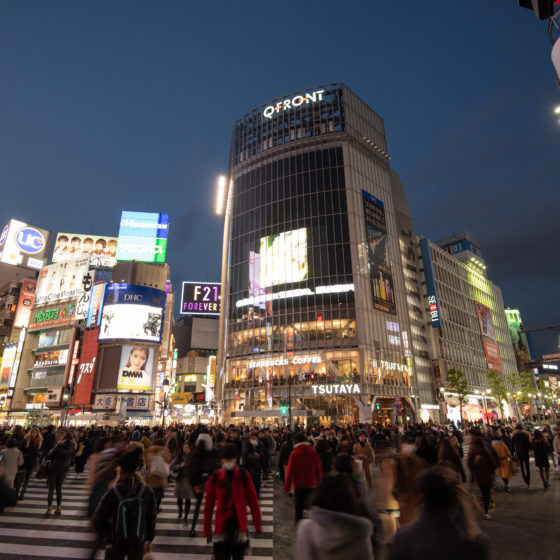- The airport-centered town of Haneda sits on Tokyo Bay. Large runways as well as departing and arriving jets are viewed from the bayside highway. About a century ago, fishing villages and a shallow beach made a tranquil landscape where nowadays bright lights and roaring jet engines are seen and heard. Low tides revealed a vast tideland that would prove advantageous in the 1920s for small prop-driven airplanes.
- The tideland area, however, was first envisioned for recreation. In 1909, a baseball stadium and tennis court were built on 3.3 hectares of reclaimed land extending offshore of Haneda. The wood baseball stadium, accommodating thousands of people, began as a novelist’s inspired idea. Baseball-loving novelist Shunro Oshikawa relayed to his literary-critic friend, Rinsen Nakazawa, that he wanted to create a public playground to encourage physical fitness for one and all. It turns out that the literary critic also worked as a manager of Keihin Electric Express Railway (now Keikyu Corporation), which owned the tideland. Nakazawa persuaded the company's senior executives to make Oshikawa’s dream a reality. The novelist’s vision became a venue for amateur and university baseball teams. What’s more, with later addition of a bicycle practice field, Haneda Athletic Ground was born.
- Two years after realization of the novelist’s dream, the bicycle area was renovated into a 400-meter track and stadium that would eventually host the qualifying track heats of the 1912 Stockholm Olympics. With addition of a beach and amusement park, Haneda Athletic Ground grew into a major leisure facility. In 1917, however, high tides destroyed it all. Fortunately, the story of Haneda was not to end on a sad note.
- Time heals all kinds of wounds, and in 1931, Tokyo Hikojo airfield was built on the tideland, later to become Tokyo International Airport, commonly known as Haneda Airport. Some seven years later, the airport was expanded to extend its runways.
- During WWII, private planes were prohibited; under postwar control of the U.S. Army, airlines were not allowed. In 1952, a portion of the airport was returned to Japan and a new terminal building was built in 1955.
- Nine years later, the Tokyo Olympics of 1964 spurred growth of the national economy as well as the airport. A passenger terminal and additional runways were built, the Tokyo Monorail was launched, and Haneda Tokyu Hotel opened across from the passenger terminal, the first hotel on airport premises. The elegant hotel soon became popular, with a beautiful, spacious garden looking out on the ocean, complete with a chapel and private pier. In 2004, the hotel was closed to accommodate a runway, but the year also saw the opening of Haneda Excel Hotel Tokyu on airport grounds.
- Another historic event came along two years after the Olympics: arrival of The Beatles to Japan. The famous 1966 scene of the Fab Four descending the stairway of a Japan Airlines (JAL) plane at Haneda Airport still appears in Japanese media.
- Haneda Airport today has four runways and handles 220 international departures and arrivals a day, a number set to increase. Access by train, bus, monorail, or taxi is another convenience, and Japan Railways has future plans to open three direct lines to the airport.
ENGLISH CONTENTS

2019.08.02
ENGLISH CONTENTS
Flowing with the Tides of Time and Economy
An airport nowadays is so much more than a place where jets take off and land. Abundant shopping and dining are highly entertaining ways to spend your time, and Haneda has many outstanding facilities.
Come experience the glamor and the excitement of a gateway to the sky with the allure of adventure.
Come experience the glamor and the excitement of a gateway to the sky with the allure of adventure.
- TEXT
- THE EXCEL TRIBUNE
- PHOTO
- Yuta Mukaiyama
- Share
-
STAY
-
HANEDA EXCEL HOTEL TOKYU
-
〒144-00413-4-2, Hanedakuko, Ota-ku, TokyoTEL.+81-3-5756-6000FAX.+81-3-5757-0706








